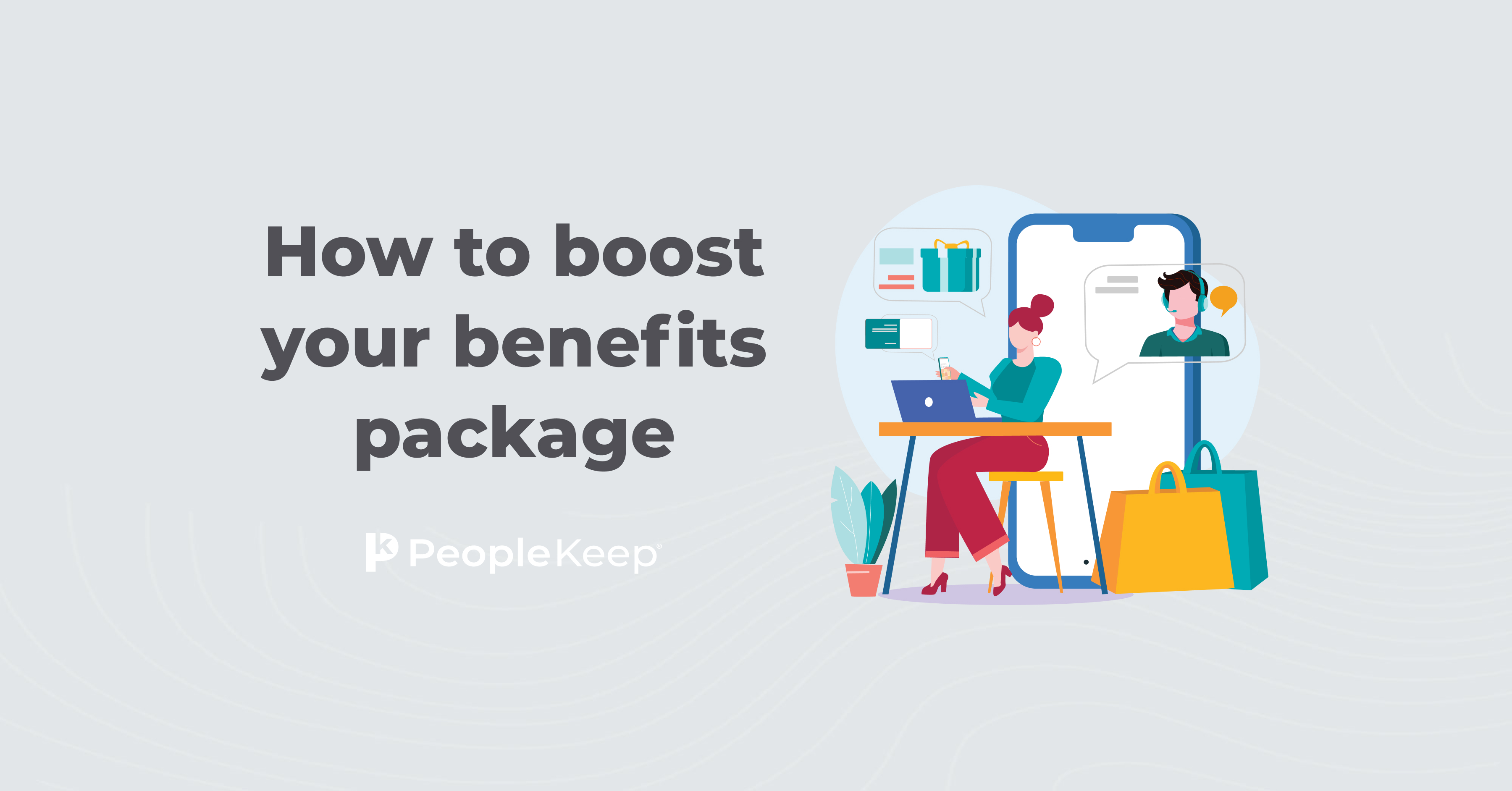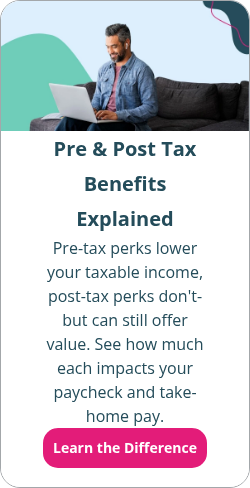What is an employee onboarding program?
By Holly Bengfort on January 23, 2024 at 6:25 AM
When a job candidate accepts an offer from an organization, they don't immediately become a successful employee. They need a smooth transition into their position. This involves going through a quality onboarding process to learn the ins and outs of their new role and employer.
Unfortunately, not all new-hire onboarding programs are adequate, leaving some new hires without a clear understanding of their role or the organization's systems.
In this article, we'll explain what employee onboarding programs are, why an effective onboarding process is vital for the success of your organization, and how to ensure a positive onboarding experience for your employees.
Takeaways from this blog post:
- An effective onboarding program gives new hires a clear understanding of their role and the organization's systems.
- Onboarding goes beyond orientation and involves acquiring the necessary knowledge, skills, and behaviors for success.
- Onboarding programs improve employee retention and company culture, saving organizations money in recruitment costs.
What is an employee onboarding program?
A formal onboarding program is a process for new workers to acquire the necessary knowledge, skills, and behaviors to be successful at their jobs.
This differs from a new employee orientation, where workers fill out new hire paperwork. While orientation is part of the employee onboarding experience, there's much more to onboarding than completing Form I-9 employment verification, W-4s, and direct deposit documents.
The employee onboarding process can last for days, weeks, or even up to a year, depending on the role. It involves everything from building bonds with co-workers to learning about the employee benefits you provide.
Companies of all sizes use onboarding programs to retain new hires and gain a competitive advantage in an increasingly remote and globalized workforce.
Why is onboarding important?
An optimized onboarding process can improve employee retention, saving your organization thousands of dollars in recruitment costs and improving your company culture.
If your organization sees an increase in new hires quitting within their first 90 days, it may be time to step back and look at your onboarding process. Is it structured and consistent? Your organization will have greater success when you establish a structured onboarding process.
An effective employee onboarding program ensures new hires feel welcome and prepared for their new role. This gives them the confidence and resources they need to make an impact within your organization.
If your new workers don't get the information they need to succeed, they may become disengaged and dissatisfied immediately. Without a structured onboarding process, new hires will take longer to understand how your organization works and how to perform their work.
Imagine you're a new hire. On your first day, your employer gives you a tour of the office, allowing you to meet a few co-workers. After filling out the paperwork, you receive your first big project, and it's due at the end of the day.
Situations like this can cause immediate stress. Your new hire has to figure things out on their own, which can lead to high turnover rates and low employee satisfaction.
What if, instead, your new hire had a chance to learn about your organization, their responsibilities, your company standards, and company policies before starting their first project? Your employees will feel welcome and prepared.
Your onboarding process is a chance to start things right.
What are the onboarding steps for a new employee?
In the following sections, we'll outline the steps you should follow when onboarding a new hire.
Recruit your new hire
Onboarding begins with your hiring process. You need to ensure your hiring and interview processes are straightforward and effective at letting prospective employees know what the position entails, what benefits you'll provide, and what working at your organization is like. That way, you can attract the right candidates for the job.
Potential employees should have a basic idea of your mission, vision, values, and organizational culture before they start.
To ensure your hiring process is effective, consider the following tips:
- Review your detailed job description for clarity and tone. Your posting should be clear on job requirements, including experience and skills.
- Be transparent about company policies, annual salary, and employee benefits,
- Don't let the interview process drag on for too long, or you'll lose candidates.
- If you're in-office, consider showing your top candidates around so that they can get a feel for your organization.
It's also a good idea to learn each candidate's career goals so that you can determine whether or not they’re a good fit for your organization.
Once you've selected your ideal candidate, ensure your offer letter shows how excited you are to have them on the team. Be sure to provide compensation details, their starting schedule, and other vital information to prevent any surprises before they accept the job. Once they accept the position, you’ll want to share any dress codes they should follow and expectations for their first day. This will help them prepare without wondering what to expect.
Prepare for your new hire before their first day
If your new hire arrives or signs in for their first day and nothing is ready for them, they'll notice. You need to be prepared for your new hire to begin.
Have an onboarding checklist or guide ready for them that helps address their questions, provides some quick information on your organization, and includes who they can contact for help. You can also include login credentials for any computers or software they’ll need and information on employee benefits.
Be sure to set up their computer and accounts by the time they arrive so they can get started on their onboarding checklist without waiting around for your help.
Consider preparing the following before your new hire's first day:
- An itinerary for their first week (or more)
- A welcome packet with their login credentials and information on how to sign in to company tools, such as email and messaging platform
- Information on your organization and expectations of employees
- Staff directory
- Employee handbook
- If you have remote employees, be sure to send them their new hire paperwork before their start date
Some organizations also opt for welcome gifts like company swag to make new employees feel welcome. This isn't necessary, but your new workers will appreciate the gesture when they start work.
Welcome your new worker on their first day
The primary goal of your employee's first day should be to get them situated, complete any new hire paperwork, and start their onboarding program.
Fill their first day with activities that make them feel welcomed, appreciated, and included. This is an excellent time for your new hire to meet current employees and managers and get to know them.
Some ideas for your new hire's first day include:
- Hosting a team lunch. This is a great way for your new hire to get to know their team
- Introduction to your organization, your history, and your products
- Overview of mission, vision, values, and goals
- Overview of their responsibilities and company expectations
- Tour of the office, if in-person
- Begin job training/onboarding program
Continue engagement and onboarding beyond the first day
The onboarding period shouldn't stop after the first day or even whenever your new hire finishes training. When your new hire officially starts in their role, you'll still want to check in on them and make sure everything is going smoothly.
Hold regular check-ins with your new hire, and plan for meetings after 30, 60, and 90 days to see how they feel things are going, what help they need, and if they have any questions or feedback. You can also accomplish this by having your managers conduct regular one-on-one meetings with their direct reports. This allows employees to ask questions, give or receive feedback, and let their managers know how they’re doing.
You can also pair your new hire with another employee as their onboarding buddy. This is someone your new hire can reach out to for help or clarification at any time. With a buddy program, your new hire can feel confident they have the support system they need to navigate their new role.
Introduce your benefits package
A robust benefits package is one of the best ways to attract and retain workers. If you're offering benefits to your new hires, you need to let them know what your benefits are and how they work as soon as possible.
When workers understand their benefits, they're more likely to use and value them. This contributes to greater retention rates and engagement.
If you're looking for personalized benefits to offer to your workers, PeopleKeep can help. We help organizations of all sizes offer personalized benefits, like health reimbursement arrangements (HRAs). With an HRA, you can reimburse your employees for their qualifying medical expenses and individual health insurance premiums tax-free.
Tips for a successful employee onboarding process
When starting your program, there are a few things you need to keep in mind:
- When will your onboarding begin?
- How long will it take?
- What do you want your new hires to know and feel after their first day, week, or month?
- Who will be involved?
- What are your goals for the program?
- How will you measure success?
As part of your effective onboarding experience, you'll want to ask for input and feedback from your new hires. This allows you to make changes based on their needs so you can improve your program over time.
You should also plan on recognizing and encouraging your new hires early on. This will motivate them to continue to do their best work and stay at your organization.
Finally, you should build a solid manager-worker relationship, which we'll expand on in the next section.
Build a manager-employee relationship
You've likely heard the phrase “employees leave managers, not companies.” This is why it's so important to invest in your managers.
Not only do managers hire, train, and supervise employees, but they also communicate the goals of your company. They represent what your company is all about. They’re a reflection of you and your vision for success.
As such, your managers' success (or failure) with hiring, training, supervising, and communicating vision significantly impacts employees' success at your company. Not interacting with and supporting your new hires in the first 90 days can lead to increased employee turnover.
The more you can do to build opportunities for managers to support new hires early on and throughout the entire onboarding process, the better your organizational culture and your new hire's job satisfaction.
You can build an excellent manager-employee relationship by:
- Being open and honest
- Having clear training deliverables
- Checking in with new hires regularly
- Communicating your organization's vision and goals
Conclusion
A proper onboarding program ensures your new workers have a good foundation and support system so they can feel confident getting started in the first few days of employment.
An effective onboarding plan can be the difference between an entire team of productive employees who stay with your organization and workers who come and go quickly because they don't feel supported.
By following the tips in this article, you can create an onboarding experience that promotes proactive behavior, employee engagement, and a better experience for your new hires.
This blog article was originally published on July 16, 2014. It was last updated on January 23, 2024.
Check out more resources
See these related articles

How to welcome a new employee
Welcoming a new employee is an important step in ensuring their success within your organization. Get tips on how to properly welcome a new team member.

How to set up an employee benefits program in one hour
Wondering how to offer employee benefits? This quick guide will show you how to set up an employee benefits program in just one hour.

How to boost your benefits package
Boost employee satisfaction by offering a competitive benefits package. Learn how to create an attractive package that meets the needs of your employees.



